All About Travertine | What Is Travertine & How To Add It To Your Interior Design
In anticipation of the upcoming launch of Riluxa’s travertine collection, we’re excited to offer a sneak peek at our meticulously crafted travertine washbasins. We will also delve into the intriguing origins of travertine and its unmatched versatility, sharing practical tips on maintaining its timeless beauty. Stay tuned as we reveal inspiring design ideas and creative ways to incorporate the luxurious appeal of travertine into your home.
What is Travertine?
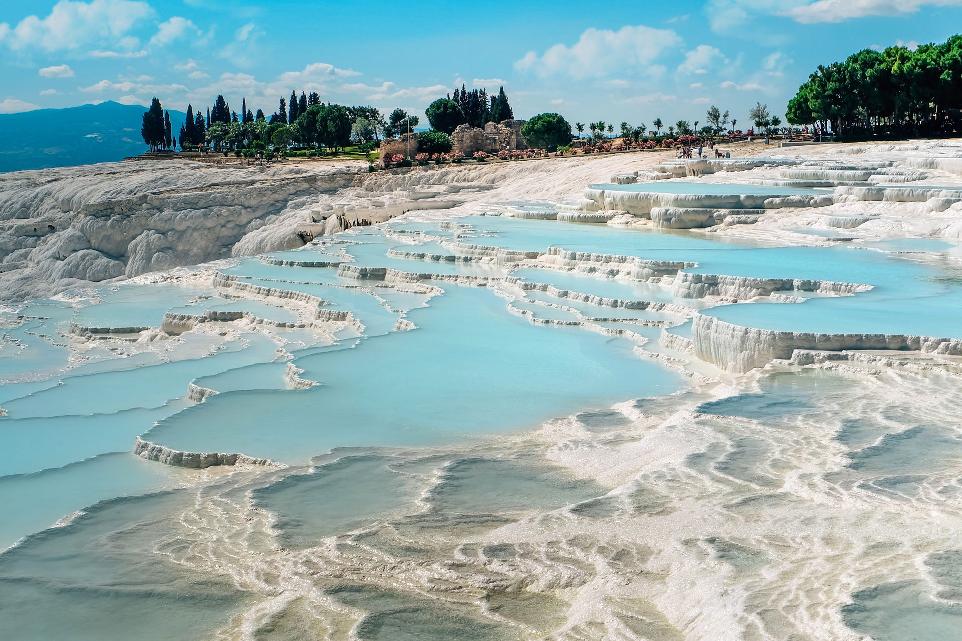
Travertine is a type of terrestrial limestone that's deposited around mineral springs.
Travertine forms when mineral-rich water moves through sedimentary rocks. Over time, this seeping process leaves mineral deposits behind, which harden and turn into travertine. This natural chemical process gives the stone a detailed pitted texture, making every piece of travertine unique.
Travertine is found in hundreds of places worldwide, but it's especially common around hot springs. Famous locations include Tivoli, Italy; Pamukkale, Turkey (a UNESCO Heritage Site); Lagunas de Ruidera, Spain; Badab-e Surt, Iran; and Hierve el Agua, Mexico.
In the past, whole structures were made of travertine. For example, Rome's iconic Colosseum is made from 3.5 million cubic feet of travertine, while the Sacré-Cœur Basilica in Paris was created using a particular variety of local travertine that effectively self-bleaches on contact with rainwater - giving the building its gleaming white aspect that shimmers beautifully in the sunshine.
Today, travertine is used for floors, patios, walls, pool decks, furniture and bathroom design (such as wash basins). The stone is available in a variety of warm, earthy colours, making it versatile for any interior aesthetic. Popular options include beige, tan, ivory, cream, pink and yellow, each bringing a unique and inviting ambiance to your space.
Travertine also comes in an array of finishes, from polished or honed to brushed or tumbled. Whether you're drawn to the earthy rustic charm of a honed, matte finish with its characteristic indentations or the sleek sophistication of a polished look, travertine offers a style to suit every taste.
Why is Travertine So Popular Right Now?
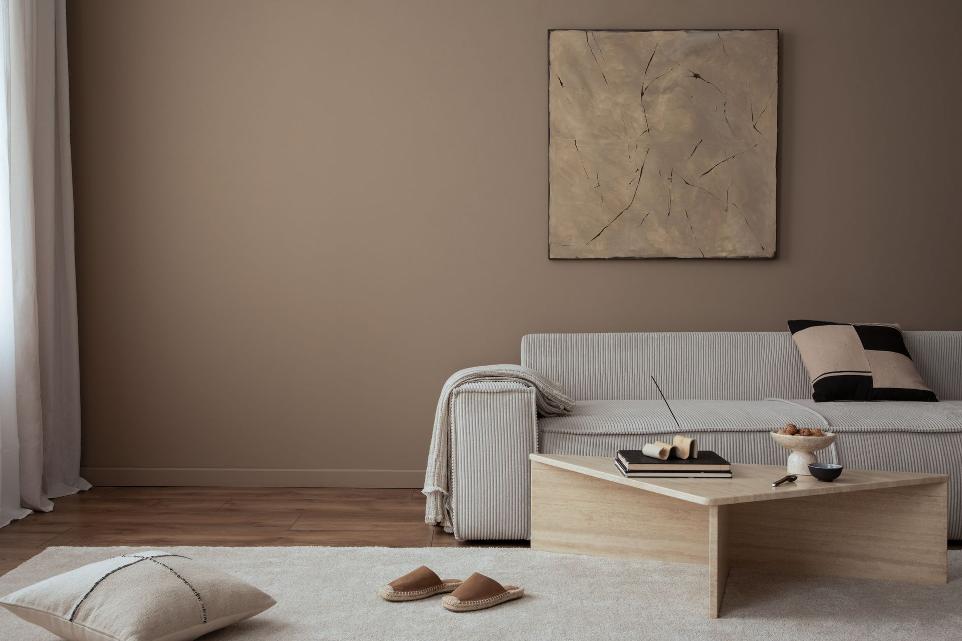
It might seem like travertine is having a moment right now, but this material has been a favourite for centuries. With reliable properties and a timeless finish, this stone stands the test of time while always looking effortlessly sophisticated.
Travertine's durability is a key feature that attracts design enthusiasts. It's resistant to extreme temperatures and is suitable for both indoors and outdoors. It can also survive heavy foot traffic and splashes, making it more practical than alternative options.
Natural stone will always be in demand. Whether you're looking for a rustic finish or want a pristine addition to your bathroom, travertine can be moulded to your design needs.
Although it may feel like this stone is everywhere right now, the reality is that this timeless design classic has never truly gone out of style. The current spotlight on travertine can be attributed to the innovative and fresh ways designers and homeowners are incorporating it into their spaces, and in particular, their bathrooms. From elegant washbasins to sophisticated shower enclosures, travertine's versatility is being reimagined in beautiful, contemporary ways.
Introducing our Travertine Collection
We’re thrilled to unveil Riluxa’s upcoming travertine collection, which will initially consist of a range of floating and countertop basins. These beautifully crafted pieces embody both timeless elegance and modern sophistication. Following the launch, we plan to expand the collection with luxurious travertine bathtubs, offering even more ways to elevate your bathroom design. As a special treat, we’re providing a sneak peek at some of our exquisite washbasin designs that showcase the natural beauty and versatility of travertine.
Travertine Strengths & Weaknesses
Although travertine is durable and attractive, it may not be the perfect fit for every application. To help you make an informed decision, here are some key strengths and weaknesses to consider.
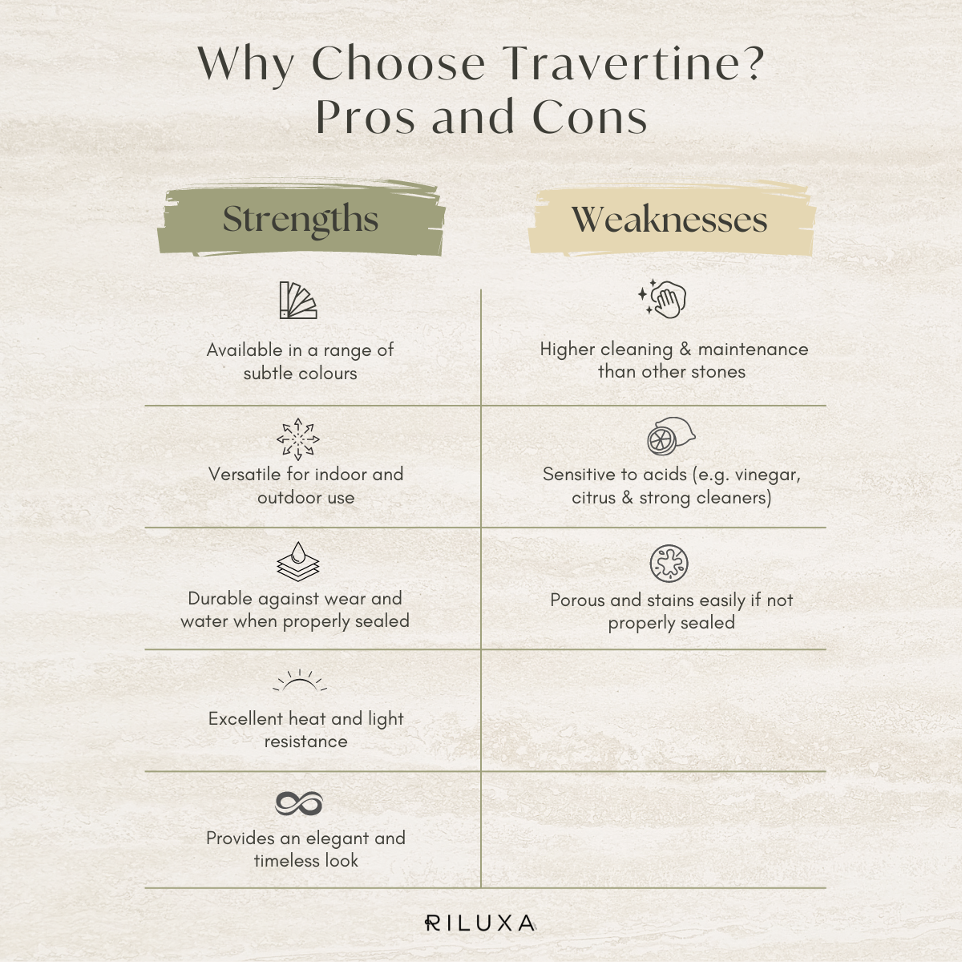
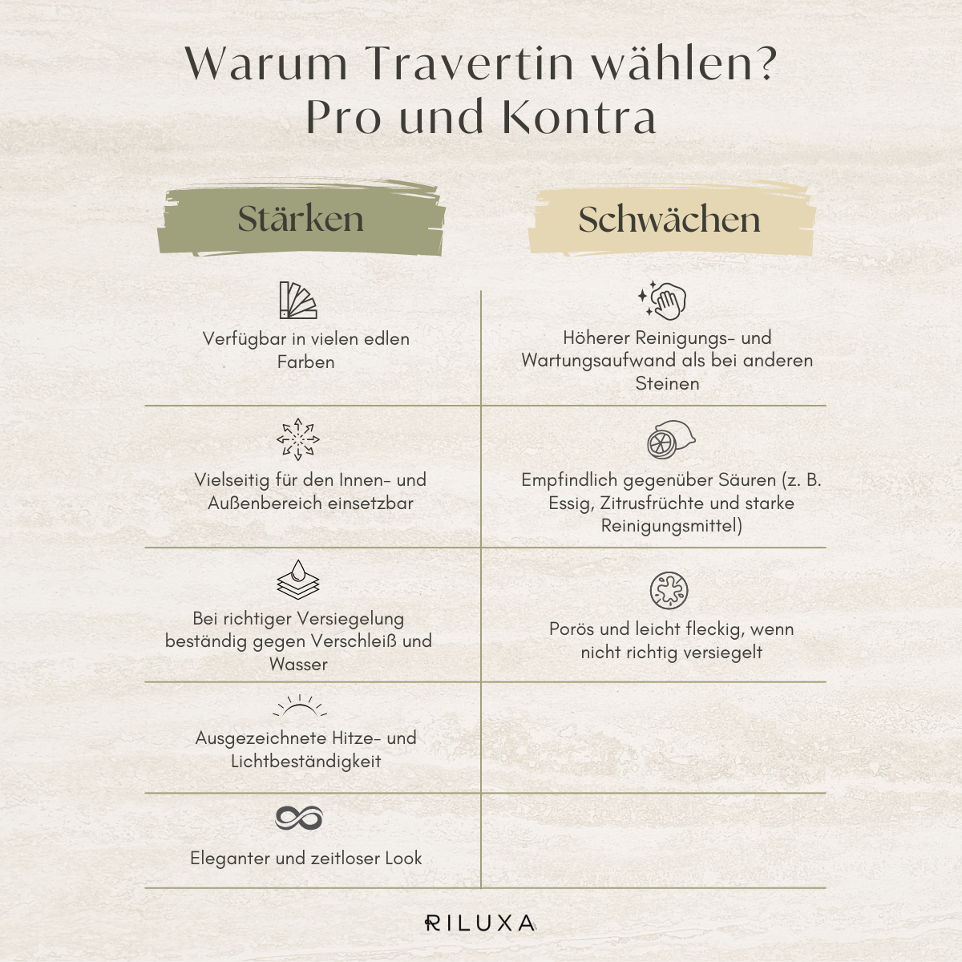
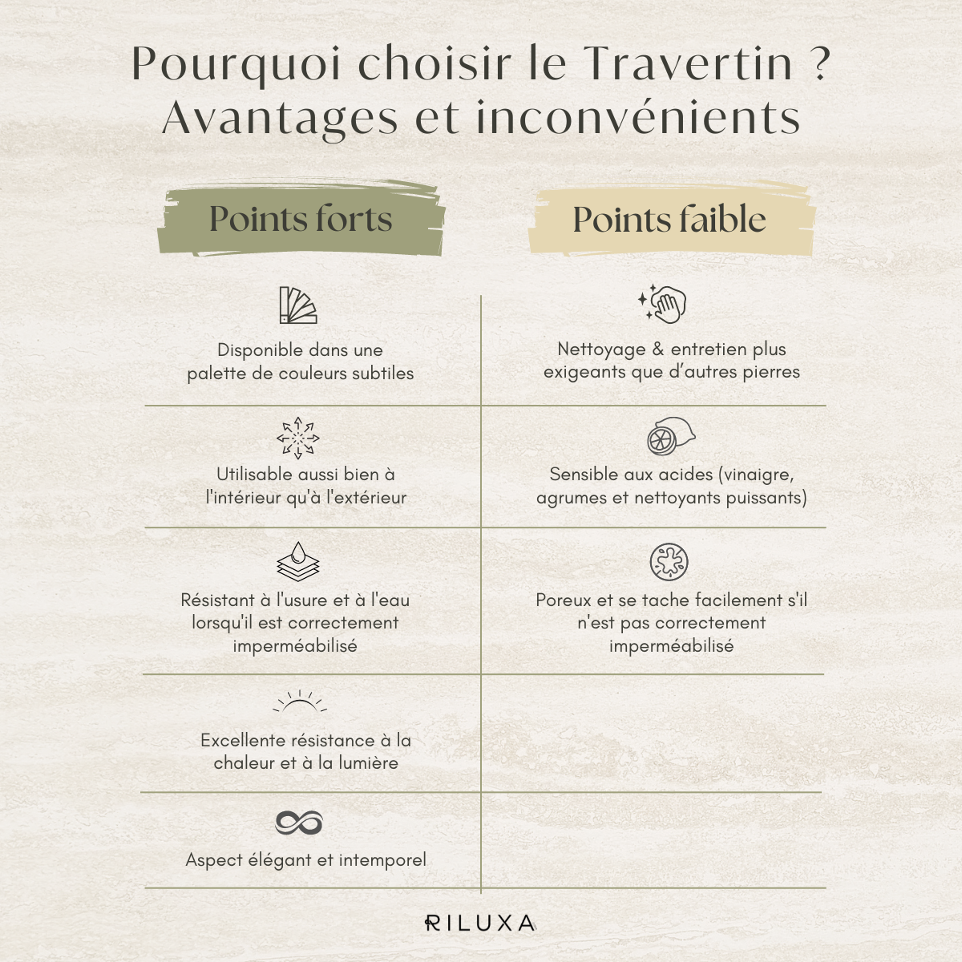
How Do You Care for Travertine?
Finally, the last factor to consider before opting for travertine is knowing how to care for it.
Once installed and sealed, travertine is typically straightforward to care for. Whether it's on your kitchen floor or a bathroom focal point, you must frequently wipe it down. It's best to clean it with a soft, damp cloth and a small amount of soap.
If you want to use something stronger, opt for cleaning products specifically designed for stone surfaces. Harsh chemicals can etch or stain travertine. pH-neutral cleaners are best for deep cleans.
Regularly cover your travertine with a stone sealant for long-term protection. If any chips, cracks, or imperfections appear, address them promptly.
The Bottom Line
Travertine’s enduring popularity is rooted in its classic look, versatility, and functionality. Whether you’re aiming for a traditional look or want to blend modern aesthetics with natural materials, this stone offers endless possibilities. Travertine remains a symbol of refined design, and this reputation isn’t set to change any time soon.
Stay informed about our exciting launch and more design inspiration by subscribing to our newsletter and following Riluxa on social media.